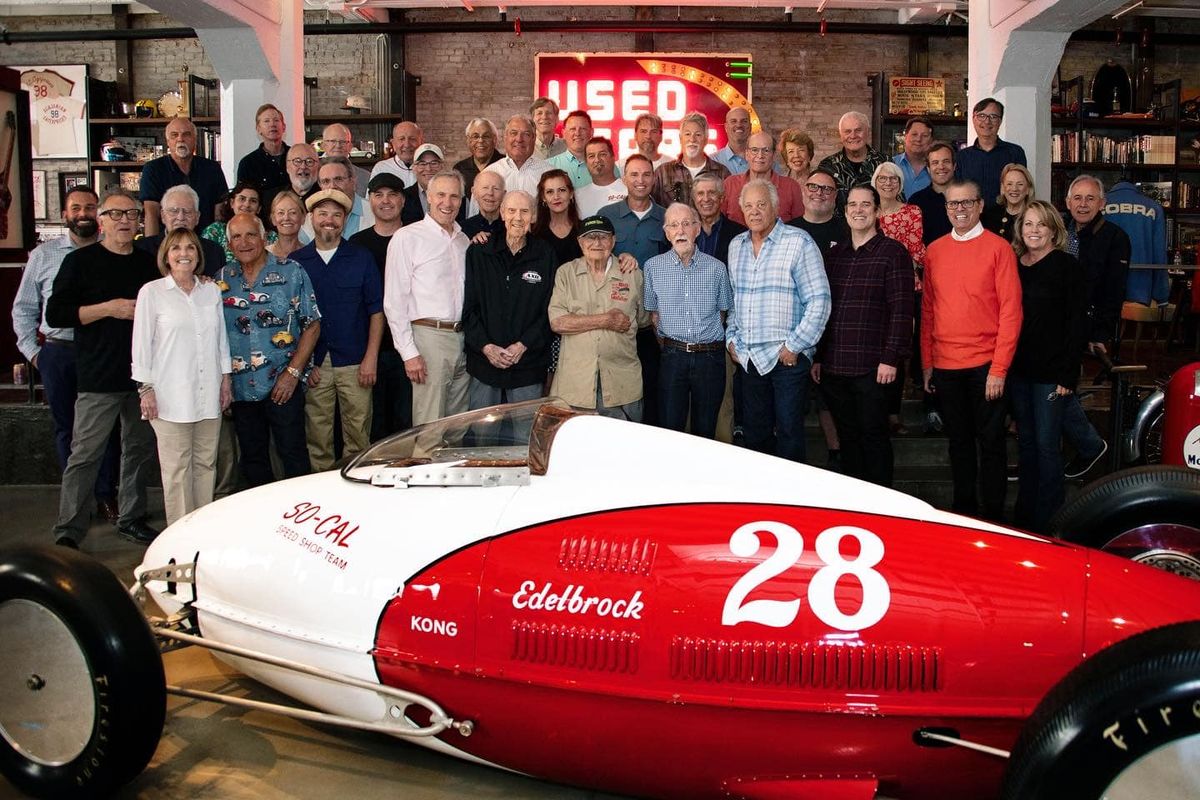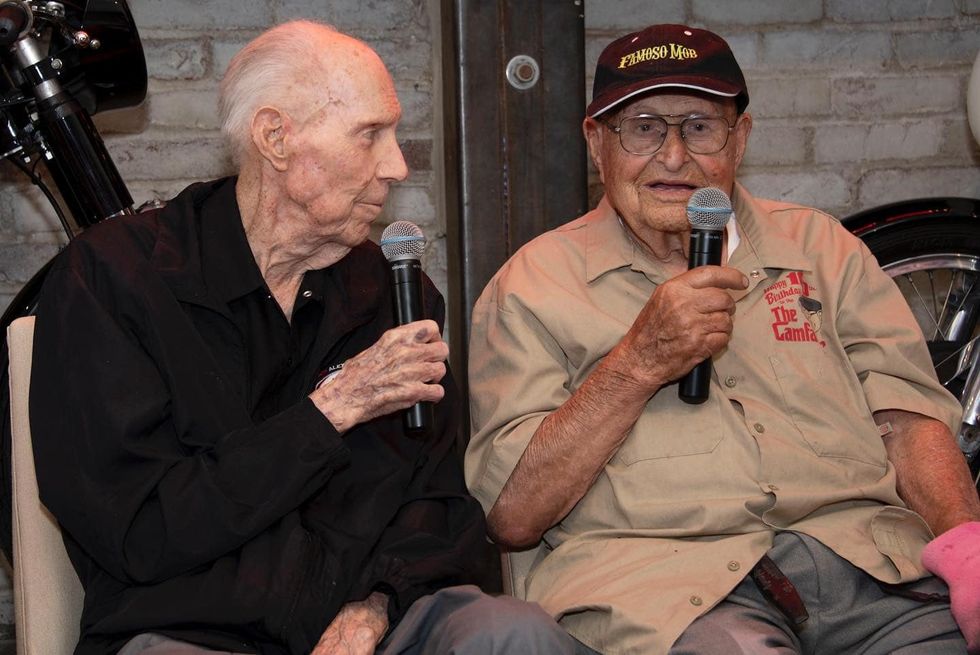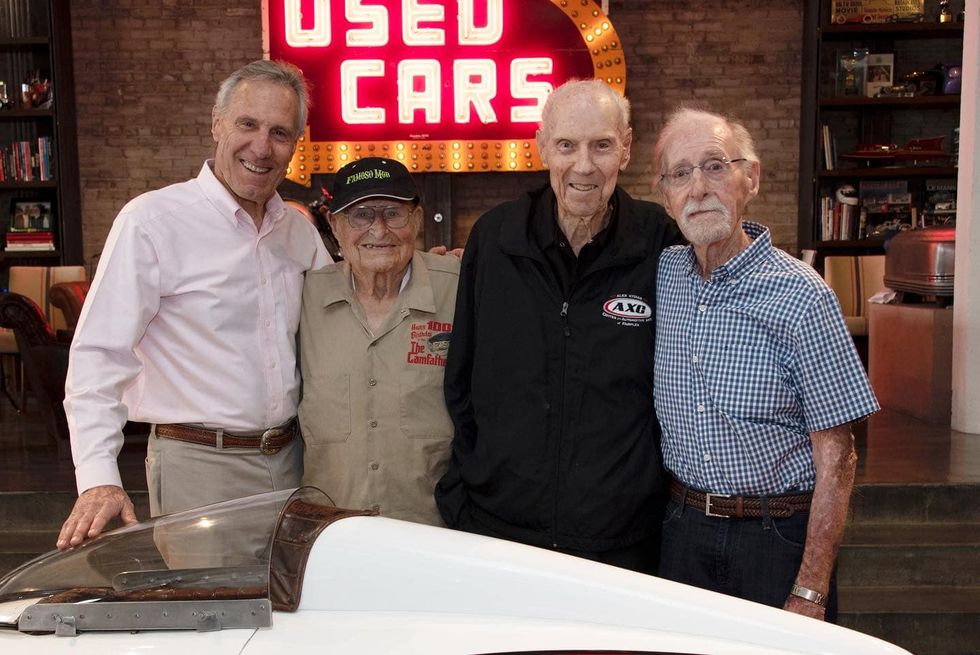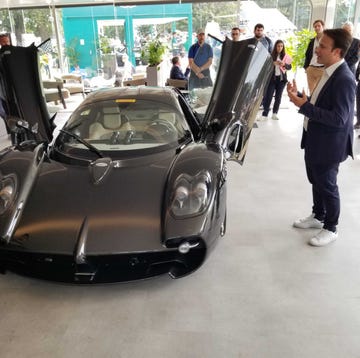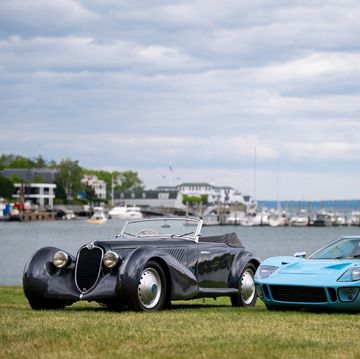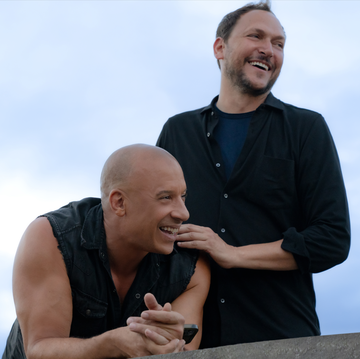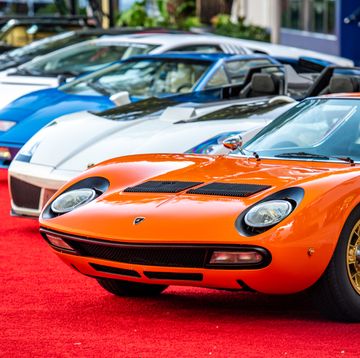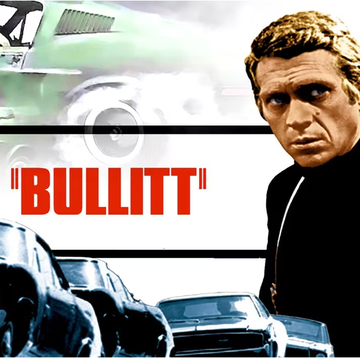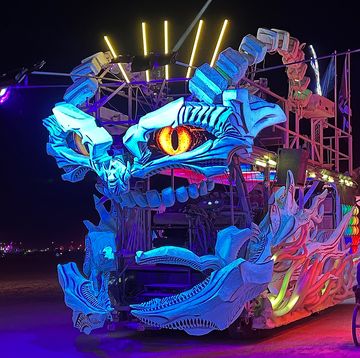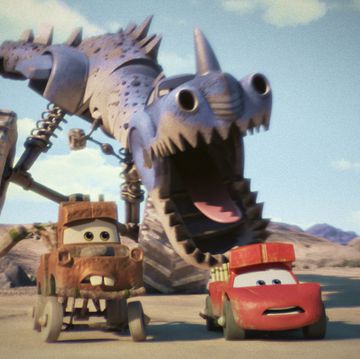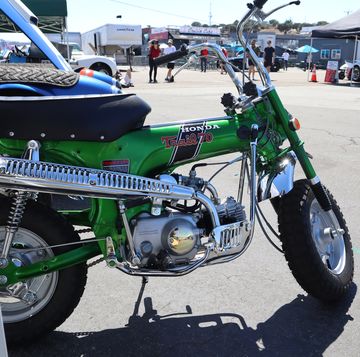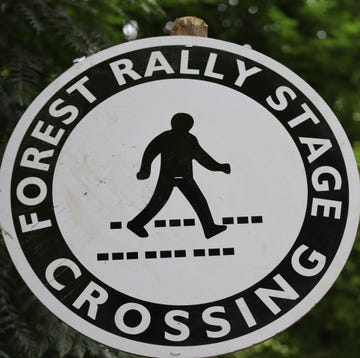- As soon as he got out of the Army Air Corps in 1945, Alex Xydias founded the SO-CAL Speed Shop in Southern California.
- The shop went on to set records on the lakes and at the drags.
- Xydias went on to co-found SEMA, the SEMA show, to film races all across the country, and to establish the legend of the Southern California hot rodder forever.
Hot rod hero Alex Xydias, founder of the SO-CAL Speed Shop, WWII Army Air Corps veteran, one of the founders of the SEMA show, a Petersen Publications publisher, and an all-around great guy, has added another honor to what has become a world-beating long list of them: centenarian.
Xydias turned 100 March 22, a milestone marked by a gathering of 50 friends and family at the private collection of Xydias’ friend and Beverly Hills car collector Bruce Meyer.
“What a guy,” Meyer said. “Can you imagine that life?”
Let’s try.
Xydias, still sharp as a tack, has had an extraordinary life. It wasn’t just all the hot rodding stuff, though he was as formidable as anyone who ever hotted a rod, but everything else that made Xydias—and Wally Parks, Vic Edelbrock, Pete Petersen, and a cast of others—members not only of the Greatest Generation but key figures in what later became known as the American Century.
Born to Greek immigrant parents in 1922, Xydias bought his first hot rod at age 19, a ‘29 Ford, which he and a friend drove to their first dry lakes meet at El Mirage in 1941.
“We each pitched in 25 cents for gas,” Xydias recalled 10 years ago during his 9oth birthday celebration. “Gas was 9 cents a gallon then.”
What he saw when he got to El Mirage would set him on a life course that would intersect with the greatest names in hot-rodding, drag racing and car culture—eventually. As with everything else in 1941, the war intervened. Xydias was in the Army Air Corps, stationed in Douglas, Arizona.
“For three and a half years, I was mostly saving Arizona,” he said. “We all knew that at any minute the Japanese were going to come through.”
The Japanese didn’t come through, and by 1945 then-Sgt. Xydias had a 1934 Ford Phaeton and big plans. When he was on leave back in Southern California, a friend took him to a street race on Sepulveda Boulevard in the San Fernando Valley. He saw “…hundreds of kids there drag racing.”
“I was stunned,” he recalled. “There was obviously a lot of enthusiasm for it.”
So he started planning then and there to open a speed shop as soon as he got out of the service, even though the term “speed shop” hadn't been invented yet.
As soon as he was discharged in 1946, he rented a $100-a-month storefront on Olive Boulevard in Burbank and started selling chrome carburetor stacks and steel wheels. Whenever he needed something more substantial for a customer, he “went over to Vic's” i.e., Vic Edelbrock Sr.'s shop, and brought back a manifold.
The year 1946 saw a new shop on Victory Boulevard and the christening of the new name, SO-CAL Speed Shop. (The shop was rechristened SoCal Speed Shop when it was revived decades later by hot rod builder Pete Chapouris.)
“To get the SO-CAL name out there, we decided to build a belly tank,” Xydias said.
The rest is history.
Along with the shop's famous streamliner, coupe and roadsters, the belly tank (pictured in group shot above) did more than just get the name out there. SO-CAL creations were the first to go 170, 180 and 190 mph on the lakes.
By 1950, the streamliner had run 210 mph. By 1953, SO-CAL was running drag races, “since you could drag-race every weekend while Bonneville came but once a year,” and the SoCal coupe set a new record—132 mph—at the new Pomona drag strip. The name of the shop was so well known that Xydias joked about its reknown: “People would come out from back East, they'd drive by Lockheed, and they thought it was us.”
By the end of the decade, a crash and the loss of some key personnel at the shop saw Xydias close SO-CAL and turn to filmmaking, documenting the great motorsports events of the day. Xydias would cover not only the local drags but also the Indy 500, Pikes Peak and races at Daytona, showing the edited films in local theaters days after the events themselves (this was long before motorsports was covered on television).
He kept up as a filmmaker for a few years until 1963, when he accepted a job from his friend Pete Petersen as editor of Car Craft magazine and later as publisher of Hot Rod. From there, he and Petersen started what is now known as the SEMA show. He did the same working with Mickey Thompson to establish the SCORE off-road equipment show.
By 1987, he was 65. He retired after selling the off-road show and thought he'd take it easy for a while. That lasted about a minute. Over dinner at the Bakersfield Hot Rod Reunion, collector Bruce Meyer mentioned that he wanted to find and restore the original SoCal belly tank. That lead to an association with hot-rod builder Chapouris—whom Meyers chose to rebuild the belly tank—that has lasted ever since.
Xydias' 90th birthday celebration was held at the Pomona Fairplex's then-new conference center, a thrown rod away from the Pomona drag strip, and it was a benefit for two charities. One was the Wally Parks NHRA Motorsports Museum, also on the Fairplex. The second was the Alex Xydias Center for Automotive Arts, which goes a long way toward replacing auto-shop classes for kids in the Pomona area.
Part of the fundraising for the Center that night included an auction of some of Xydias' trophies, our favorite of which was won by the streamliner at the first Bonneville Speed Trials in 1949. That one went for more than $13,000.
“We didn't spend that much on the whole car that won this award,” Xydias said.
His 95th birthday was at the Alex Xydias and Pete Chapouris Center for the Automotive Arts, an institution founded by Xydias and funded by a $500,000 grant from the Robert and Margie Petersen Foundation, then boosted by a million-dollar endowment from the same. The center teaches everything from welding to air conditioning to young students seeking automotive careers.
And it was his 100th birthday that was celebrated March 22, 2022, at the private collection of his friend Bruce Meyer, along with a who’s who of hot rod royalty. That included Ed “Isky” Iskenderian, who celebrated his own 100th birthday last year, engine builder Ed Pink, a veritable youngster at 91, Don “The Snake” Prudhomme, a mere teenager at 80 (soon to be 81, send him a card, will ya?), hot rod builders Roy Brizio, Jimmy Shine, and Troy Ladd, the Petersen Foundation’s Gigi Carlton and her drag racer-businessman husband “Gentleman” Joe Schubeck, The Race of Gentlemen founder Bobby Green, racers-turned collectors Dick DeLuna, Tom McIntyre, Lynn Park and Dennis Varni, author and hot rod industry figure Tony Thacker, NHRA Museum curator Greg Sharp, American Hot Rod Foundation director David Steele, Petersen Automotive Museum Executive Director Terry Karges, Pixar’s car guy Jay Ward, mega-car dealer and collector Beau Boeckmann and about 30 or 40 others too numerous to fit here. Oh, and two lovely daughters and one son-in-law.
It's been a life well-lived and this week it was well-celebrated, all of which Xydias tried to sum up in a final few words to the party.
“I thank all of you for being here. And Bruce, I look forward to the next 100 years.”

